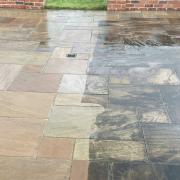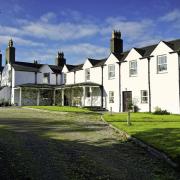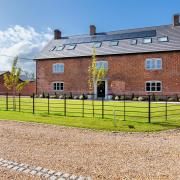The mobile phone mast: from monstrosity to utility

The daily commute home gives a small window of peace and quiet between work and children. I try and see the positives in every traffic jam: it gives time to catch up on my “home admin” phone calls! I know perfectly well that there is a mobile dead spot en-route but each time I make a call, I hit that very area of ‘no signal’ just at the crucial bit of the conversation. I know that unless you’re living in a larger town, or city, this will undoubtedly have happened to you… Additionally, my home is situated in glorious and relatively unspoilt countryside – where I have no phone signal and a broadband speed that would (on a very good day) be hard pushed to rival snail’s pace.
Having started researching this article, I found this faintly depressing. Radio waves, as I understand it (if you put them side by side on the track!) are faster than the speed of light: a signal for financial markets from Paris to Frankfurt via cable was timed at 4.5miliseconds. I can categorically state that this is not a rate that I have ever experienced!
The placing of mobile masts around the UK is crucial: in the early days, when mobile phones were in their developmental infancy – do you remember the ones that were the size of a house-brick? – it was thought that putting masts up on about 500 hills across the country would amply fulfil the mobile network need of the future. That was of course in the days when what you did on a phone was make a call. The criteria of said hills were that they had to be in the line of sight to the next hill, and that was pretty much it.

Ironically, now that digital technology has advanced in leaps and bounds, the range of the antenna housed on telecomms masts is actually reduced. As your phone does so much more than simply transferring “a voice”, there is constant information literally flying through the air - texts, Twitter feeds, Facebook posts, transcripts, photos, contacts, music, streaming…etc etc – so that in order to get all this to our handsets efficiently, the masts need to be closer to each other: the need to avoid congestion is a constant battle. Having the masts popped up on a hill far, far away, is not the solution any more.
When telecomms masts first started appearing, they were greeted (naturally) with cries of horror. The telecomms companies did their best – disguising them as ‘trees’ for example – when they were not, as was accepted, on top of a hill. When they began to be installed at the outset, they were pretty enormous structures carrying hundreds of obvious antenna: with the advances of technology, every part has downsized. Masts, being smaller, can be sited closer to us, which hopefully negates problems with interference – and, of course, improves your phone signal! Planning – or Permitted Development – now is more empathetic to telecomms: appropriate greenfield sites can even have a mast, as can rooftops. A site needs and access track, power supply, good planning prospects (i.e. natural screening); suitable roof tops with a clear view are still viable – for example, warehouses, or barns; some antenna are now so compact they are the size of a burglar alarm and can be popped on the side of a building which negates the prospect of planning. The Strutts team has been dealing with telecomms issues for over 25 years – they negotiate leases, deal with the mobile network operators, sort lease extensions, power upgrades, rent reviews, new cabling, and site share deals. They certainly need to know their stuff – wading through the “National Guidance of Telecomms – Planning” document is not for the faint-hearted!

The way we communicate has changed dramatically in the last decade: more people have a mobile than not and seem to prefer them to the standard landline. Having lots of bars of signal has become a necessity rather than a “vanity”: in fact, it is deemed by some to be the fourth utility. When I sold my house last year, I could almost guarantee that the second question asked (once people had checked their phone signal outside) was “what’s your Broadband speed like?”
In the UK, there are currently c. 52,000 mobile base stations. Additionally, the Government’s wider “Superfast Britain” programme of work will hopefully transform the UK’s communication infrastructure. The aim is for 88% of the country to have access to superfast broadband by December 2015, with an estimated 90% getting superfast coverage by early 2016. An extra £250 million of investment would mean reaching 95% of premises by 2017 and the Government and communication industry is now exploring how to expand coverage even further, with more innovative fixed, wireless and mobile broadband solutions, to reach at least 99 per cent of premises in the UK by 2018.
It is not something that you would dwell on very much if you live in the town – but if you’re in the countryside, the lack of phone signal and broadband speed can be a major issue. A community might feel they have the ideal site to house their own mast – but the cost of a normal “mast” would typically cost upwards of £120,000 including putting in power supply, foundations, fencing and infrastructure. However, a broadband-wireless scheme might simply involve putting a dish on a building at cost of between £2-5,000 and could make a huge difference, particularly if you’re running a business from home.
I can tell you that there are some hefty documents out there which drill down into all sorts of legal and technical information - for example, the Electronic Communications Code. Since, as I mentioned, my signal at home is non-existent I cannot download said documents via my mobile. I might have to pick up my old-fashioned landline – and phone a friend…
Strutt & Parker, 37 Lower Bridge Street, Chester CH1 1RS 01244 354855





























